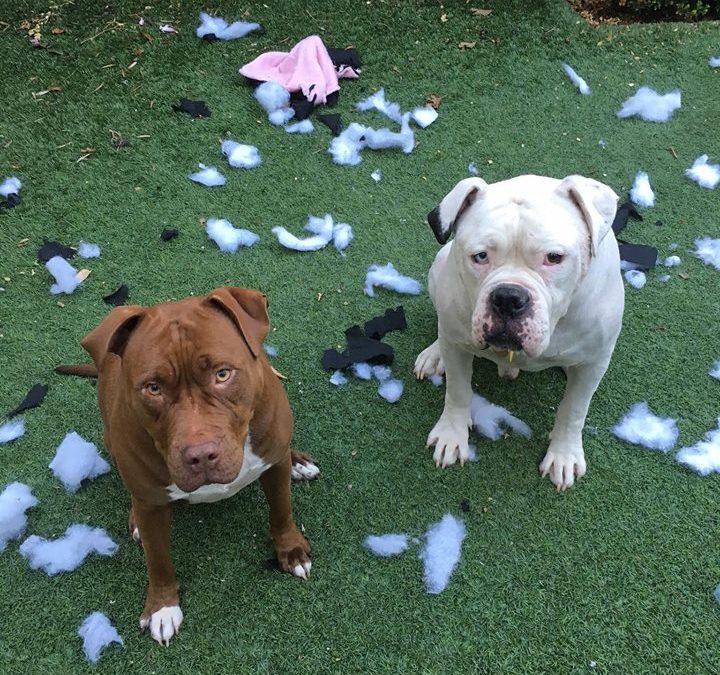Written by: Duncan Kingori, AuthenticDogs
Like humans, our pets also experience separation anxiety. In dogs, separation anxiety is characterized by agitation, upset, and even destructive behavior. These behaviors are exhibited by dogs when they are separated from their pet parents. You may misinterpret your dogs’ actions for disobedience and a lack of proper training, yet your dogs’ behavior may be an exhibition of separation anxiety.
Your dog is used to you being around and is dependent on you, and any change may cause them to experience anxiety. There are other behaviors exhibited by your dog that may be attributed to separation anxiety, and you need to help your dog reduce his or her separation anxiety or have no anxiety at all. This is to ensure that he or she may be at peace and happy- and well behaved. Here are some recommendations to help ease your precious pup’s separation anxiety:
1. Engage your dog in exercise before you depart
A dog that is tired tends to be calmer as opposed to one that is still energized. Therefore, one way to reduce separation anxiety in your dog is by engaging your dog in exercise for about half an hour before you depart. You may take part in outdoor or indoor activities and exercise with your dogs. For instance, throwing a Frisbee or tennis ball across the yard and letting your dog play ‘fetch’ is a great exercise. It also offers mental stimulation, which helps with calming. When you do this for about 30 minutes, your dog will be exhausted by the time you leave. Their attention will be towards food and sleep, and they will hardly notice that you are gone, or when you are leaving the house.
2. Teach your dog to get used to being alone when you are at home
Help your dog to get used to being by themselves, even when you are in the same house. Have your furry baby to remain in a certain room in the house (or crate if crate trained) while you go to another room in a different part of the house. If your dog’s separation anxiety is severe, you could do this in short intervals of about 20 seconds. In time, you can work this 20 seconds up to about 30 minutes. It will help reduce your pooch’s separation anxiety. They will learn to spend time away from you even when they are conscious of your presence in the house.
3. You need to change the signals of your departure
Like humans, your dogs are conditioned to associating certain signals with a specific behavior, thus your dog knows your routine before you leave home. Therefore, you need to break the routine so your dog will not associate certain signals with your departure. For example, put on your shoes 30 minutes to an hour before you leave and sit on the couch and watch the television, or maybe change the place where you store your purse and hang your keys.
This will break your dog’s association of specific actions with you leaving, and thus their separation anxiety will not be triggered. You can also give your dog treats to calm them and distract them as you go. Eventually, they will view your departure in a positive light, and see that it is not a scary thing to be all alone.
4. Minimize the level of emotions when saying your hellos and goodbyes
Completely abstain from getting very emotional when you are leaving your dog and exhibiting a lot of excitement when you get home. The extra attention and excitement increases your dog’s fear of being alone. Be calm when you are bidding your dog goodbye. When you arrive back home, in a quiet and collected manner, say hi to your dog, but don’t show too much affection or excitement until he or she has calmed down. By remaining calm when you return, you reduce the level of separation anxiety in your dog.
5. Get your dog his or her personal space
Rather than sharing your bed with your dog, get them their own bed or crate. In addition to separation anxiety, crate training is a great tool for resolving many other behavior issues such as pottying or marking in the house and destructive chewing. Plus dogs are den animals, so they like to have their safe haven. Train you dog to remain in his or her personal space by making it a positive experience with petting, playing, treats, toys or bones. This teaches your dog to be independent and to love their own space. When your dog enjoys their own company, they will be less anxious when you are away from them.
6. Leave some comfort articles and background music playing for your dog
Leave items that will comfort your dog, such as dirty clothes in the laundry bin that have your scent. This will help the dog to relax, as they will remember that at some point you will be returning home. You could also remove the stress factors from your dog’s body. Also, hide treats in the house so that the dog can enjoy hunting for these treats while you are away. Or, give your dog a Kong or deer antler to distract them while you leave. Remember to leave some soothing music for your dog, so that when they are tired, it can help soothe them to sleep and relax. YouTube has great videos to help with separation anxiety.

Helping your dog get over his or her separation anxiety requires dedication and a commitment to finding a safe and long lasting solution, so that your dog may be happy, calm, and a good dog!


Recent Comments